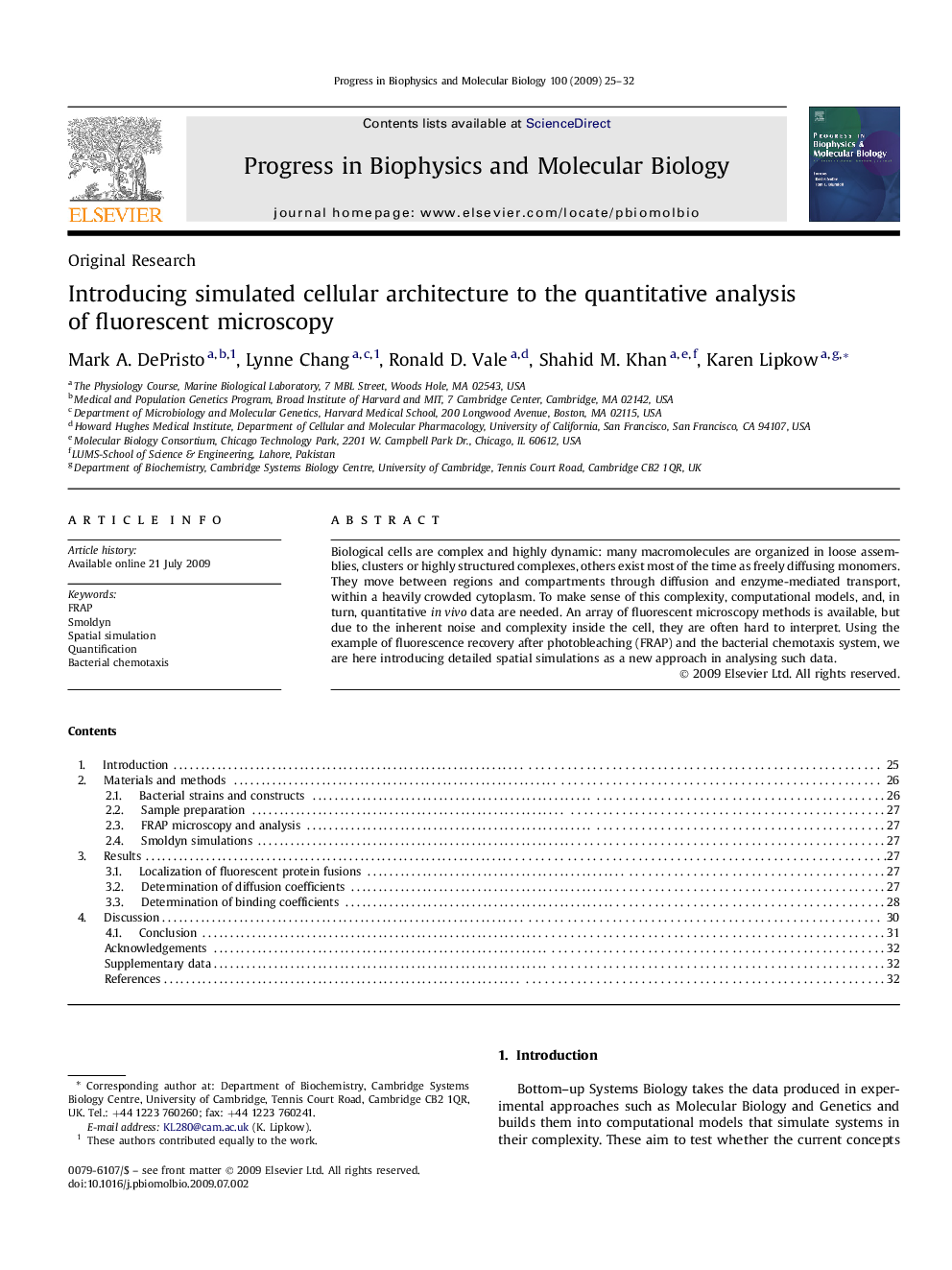| Article ID | Journal | Published Year | Pages | File Type |
|---|---|---|---|---|
| 2070246 | Progress in Biophysics and Molecular Biology | 2009 | 8 Pages |
Biological cells are complex and highly dynamic: many macromolecules are organized in loose assemblies, clusters or highly structured complexes, others exist most of the time as freely diffusing monomers. They move between regions and compartments through diffusion and enzyme-mediated transport, within a heavily crowded cytoplasm. To make sense of this complexity, computational models, and, in turn, quantitative in vivo data are needed. An array of fluorescent microscopy methods is available, but due to the inherent noise and complexity inside the cell, they are often hard to interpret. Using the example of fluorescence recovery after photobleaching (FRAP) and the bacterial chemotaxis system, we are here introducing detailed spatial simulations as a new approach in analysing such data.
